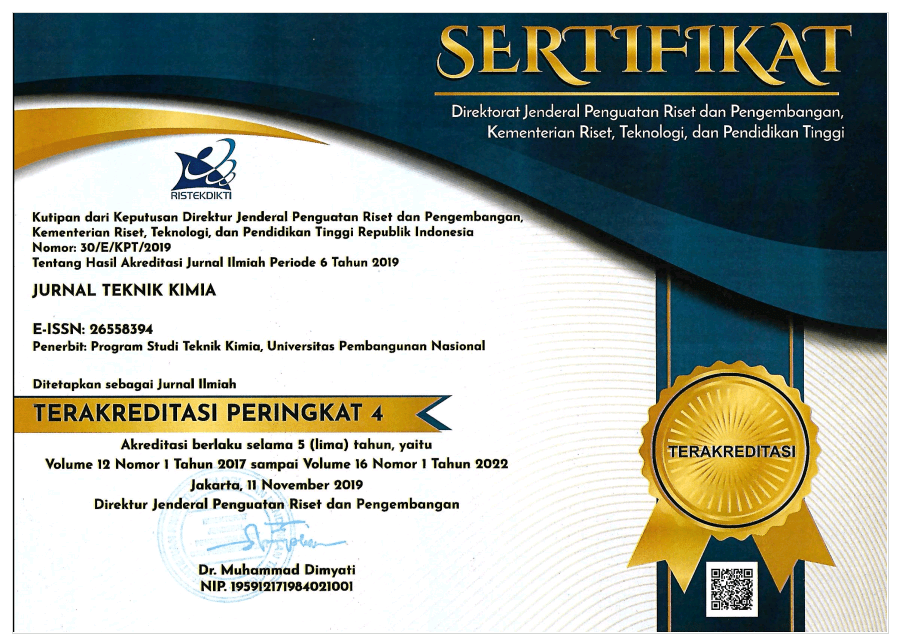ANALISIS PERPINDAHAN PANAS DENGAN KONVEKSI BEBAS DAN RADIASI PADA PENUKAR PANAS JENIS PIPA DAN KAWAT
Abstract
This paper aims to analyze the influence of geometry on the efficiency and capacity of the wire and tube heat exchanger, and present the simulation and experimental validation. Simulations were conducted using finite element method by taking into account free convection and radiation heat transfer. The geometry change was performed to wire diameter and pitch. Calculation was made by dividing heat exchanger into elements. The calculation was performed from the first element. The out temperature of the first element was used for counting the heat flow rate of the next element. This procedure was repeated until the last element. Experimental validation was performed by measuring the surface temperature of the pipe on the specified locations. The validation shows the percentage error of 5%. The highest value of heat exchange capacity per weight is produced at dw = 1mm/pw = 21mm. The highest Qtot and the lowest Tout are produced at dw 1.5/pw 14 mm. From this study, we get that the flow rate of heat produced at dw 1.5 mm/pw 14 mm increases by 4%, and the weight of heat exchangers decreases by 19%, compared to the heat exchanger on the market.
Key words: efficiency. finite element, heat capacity, pitch wire, wire diameter.

This work is licensed under a Creative Commons Attribution 4.0 International License.
Pusat Publikasi | Teknik Kimia | Fakultas Teknik (Gedung Giri Reka ) | Universitas Pembangunan Nasional "Veteran" Jawa Timur, Indonesia
Jln. Raya Rungkut Madya, Gunung Anyar Surabaya, 60294 Email : jurnaltekkim@upnjatim.ac.id








